This article will be discussing two popular programming languages in Ruby vs Python, and how they differ between their offerings in terms of the programming languages themselves, and the premier web frameworks created with the languages.
Ruby now has a huge emphasis on web development with its Ruby on Rails framework, so the latter section of this article will compare Rails with the leading Python web development framework, Django.
Features will be compared, but we won’t be walking through code samples or technical implementations. We will instead refer to official docs for the interested reader to explore further.
Table of Contents
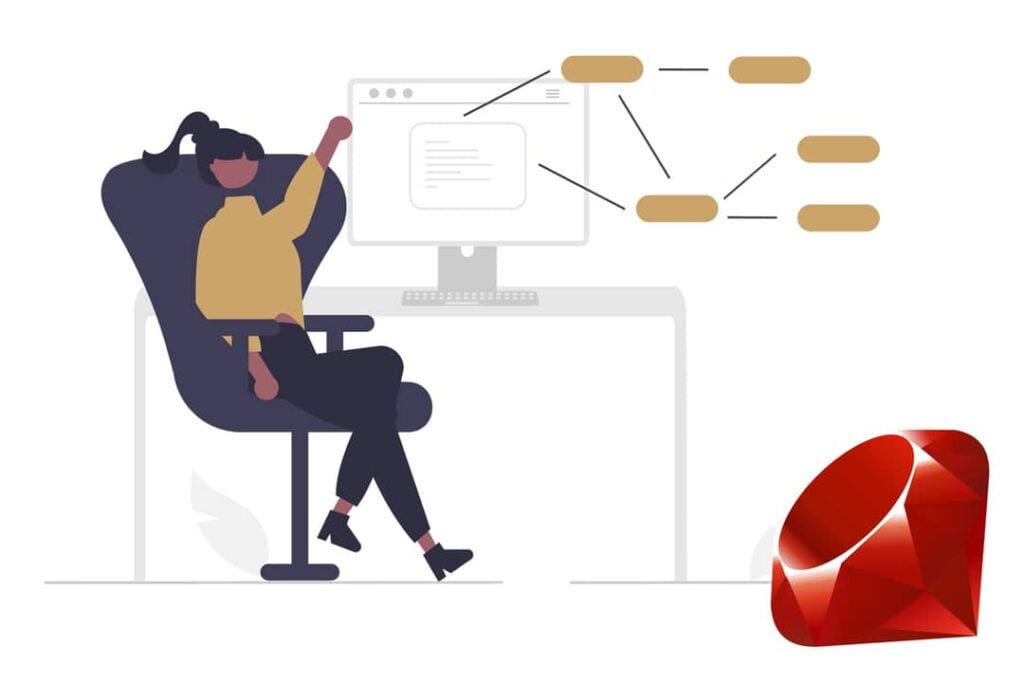
Ruby Programming Language
Ruby is a (very) high level programming language with a focus on programming productivity and simplicity in syntax. The language is cross-platform, interpreted, and is labelled a “true” object oriented programming language; everything is an object in Ruby.
Saying this, the language is multi-paradigm, also supporting procedural and functional programming patterns.
Ruby was first released in 1995 and was famously designed by Japanese developer Yukihiro Matsumoto, who still heads the development of Ruby’s reference implementation and thus maintaining the philosophy and original vision of what Ruby should be – which we’ll clearly see in the sections to follow.
In terms of popularity, Ruby now sits at #17 in the 2021 Stack Overflow developer survey (compared to Python at #3 only behind HTML/CSS and JavaScript). Like Python, Ruby is a general purpose programming language, but Python is being used for many more types of applications than Ruby is.
Ruby is clearly on a downwards trajectory having had its peak in the mid 2000’s. But having said this, it still maintains a passionate community of developers and is still actively maintained today, with the latest release being 3.0.3 at the time of writing.
Impressively, Ruby maintains a strong #6 position in top paying technologies, with Ruby on Rails being the top paid technology in the web frameworks category.
Ruby on Rails is extremely opinionated, which means it makes a lot of decisions on the developer’s behalf in terms of conventions and structure – and developers clearly value this a lot.
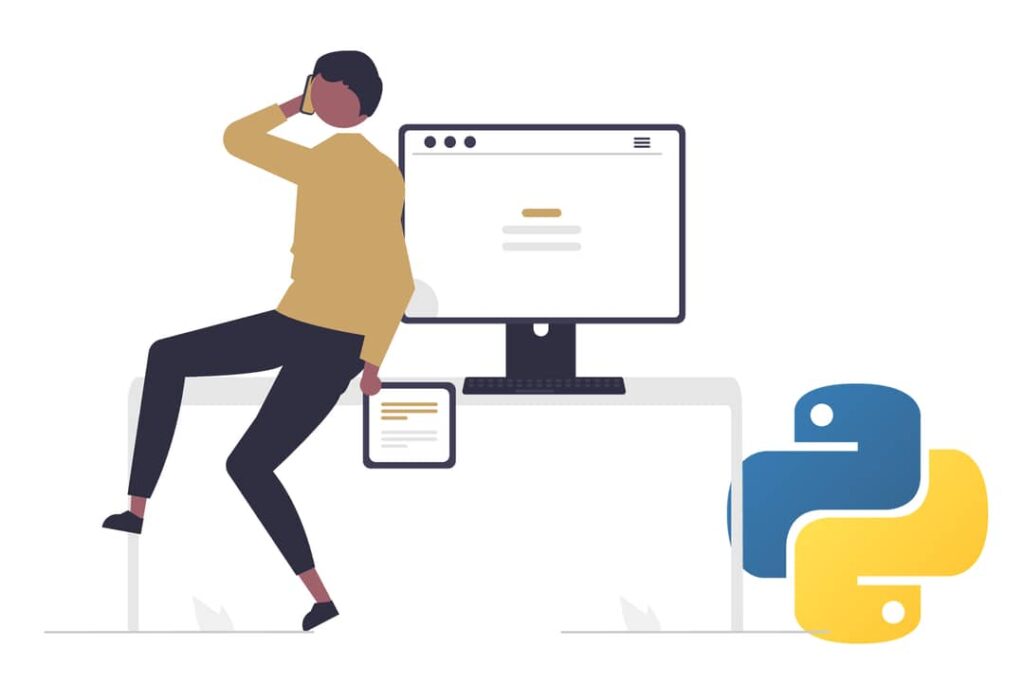
The Python Programming Language
The Python programming language (released in 1991) shares many of Ruby’s characteristics, albeit with a very different philosophy and general programming experience of using the language.
Python is also a high level, interpreted, general purpose programming language that supports a range of programming paradigms, from object oriented to functional programming. It is the most popular programming language after JavaScript, and the 3rd most popular technology overall. It also scores well as one of the most loved programming languages, outperforming Ruby by a large margin in this metric.
Importantly, Python is the #1 most wanted programming language of 2021, beating TypeScript, JavaScript and Go respectively.
Python supports classes and objects, but does not support the concept of private, public and protected access modifiers for class properties – otherwise known as encapsulation. For this reason, Python is not “fully” object oriented like Ruby is. This lack of support is not seen as a trade-off, but rather to stay inline with Python’s philosophy and the belief that hiding things is not a good thing.
Where Ruby tries to abstract logic behind a range of keywords and conditional statements that are only found in Ruby (more on this syntax further down), Python instead opts for a more conventional set of statements and operations that programmers will be more familiar with if coming from languages like C++, Java, or C#.
This is partly why Python is easier to learn than Ruby, providing its read-like-English syntax while maintaining a high level of expressiveness.
Python is used heavily in academia – whether you take a masters degree in computer science or participate in research studies in AI, blockchain protocols (such as the Ethereum 2.0 specifications), biology and genetics (check out this course on Coursera), or even astrology, Python will be a part of your toolset.
Python has impressively been able to maintain its relevance over its 3 decades, being the go to solution in fields like reinforcement learning, natural language processing, and deep learning applications today that didn’t even exist upon Python’s inception.
It is also heavily used for web scraping and data processing, and for various finance tools like price fetching and API services.
But where Python and Ruby cross paths mostly is in web development, and this will be the focus in the latter half of this article as we explore each language’s web development offerings side-by-side.
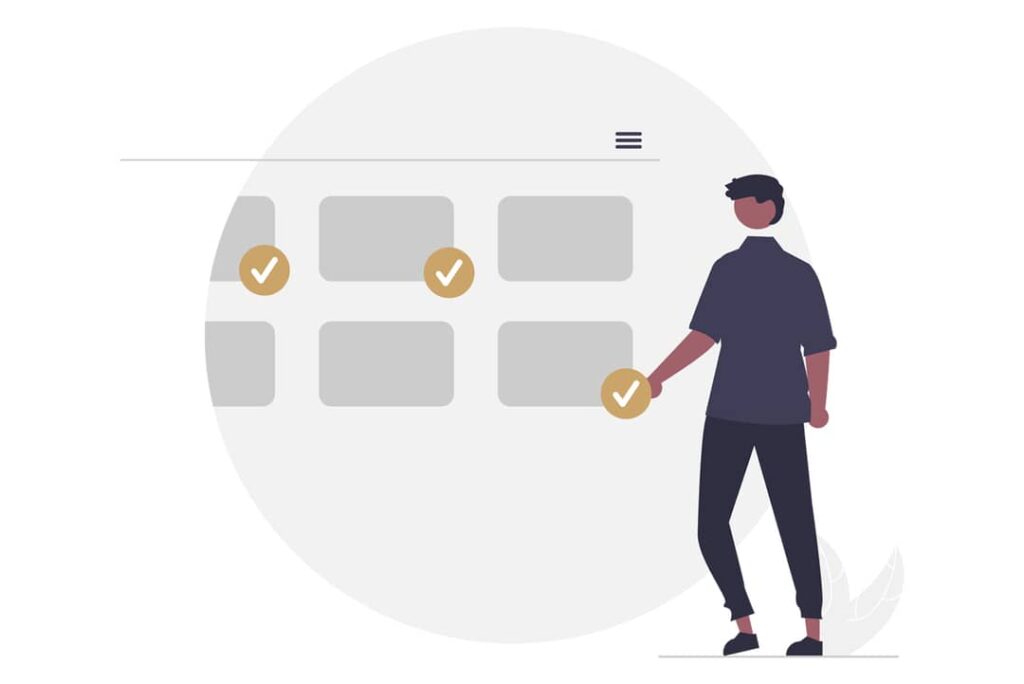
Ruby vs Python: Similarities
Now we’ve onboarded some general knowledge about Ruby and Python, let’s outline the main similarities between the two.
They are both high level programming languages
Ruby and Python are high level languages, a characteristic that typically equates to more abstraction away from the system level with a greater focus on code simplicity, readability and safety as a result.
Lower level languages by contrast typically interact closer to the CPU, support memory management via the stack and heap, and have more granular control of how bits are stored and moved around in your program. Python and Ruby both abstract this activity away from the developer, allowing them to focus on higher-level-logic of a program.
The high level nature of Python and Ruby make them ideal for web server and networking applications – APIs of which are well supported in both the Python and Ruby standard libraries.
They are both server side scripting languages
Being cross-platform languages, Python and Ruby have excellent support for a range of operating systems including popular Linux distributions. As a result, both languages populate a part of the pie in the web development space.
If we refer to web frameworks in-particular, and remove the JavaScript based solutions, then we find that Ruby on Rails and Django are amongst the most loved web frameworks, with Django actually being the most wanted web framework.
Although recent statistics clearly demonstrate JavaScript has the majority of developer interest for web development, both Python and Ruby have a strong footing in the space as alternative technologies.
They both have clean syntax with a focus on readability
Readability is a strength of both Ruby and Python; both languages offer a read-like-English style of syntax, and try to omit symbols that would otherwise get in the way, such as:
- The omission of parenthesis in Python within conditional statements, and optional omission of parentheses in Ruby.
- Python relies on indentation to block code logic, whereas in Ruby indentation is not compulsory – but is encouraged.
- A focus on expressing complex logic with as little syntax as possible; this is why both languages are often described as highly expressive.
To get a feel for how readable Ruby is, check out their control expressions documentation – perhaps the best examples of how conditionals can be coded in an easy to read manner.
Where Ruby supports a range of keywords such as “unless then” “when else” and “unless true”, Python opts for a more cryptic, symbolic set of expressions that do not rely so much on tailored keywords and control flows that Ruby opts for. This is evident in Python’s control flow docs.
Observing these patterns clearly demonstrates the different solutions Python and Ruby have favoured to achieve the goal of simplicity and unambiguous syntax.
They both have an interactive shell
Ruby offers an interactive shell called IRB – documentation of which can be found here. IRB allows developers to execute Ruby expressions on the fly in the command line. Simply typing irb will invoke the interactive Ruby shell.
Python has a similar tool called the Python Interpreter, allowing Python code to be executed in real-time. The Python Interpreter is installed by default alongside the programming language, and can be invoked by simply typing the version of Python you have installed.
Other similarities
Both Python and Ruby are open sourced technologies and free to use. Ruby’s licence can be viewed here, and Python’s here.
Both Python and Ruby are interpreted, as we’ve touched on previously. Interpreted languages are typically slower due to the overhead consumed when translating source code into machine readable code on the fly. Python generally performs better than Ruby at key benchmarks, but both languages are at the slower end of the spectrum.
Both languages are dynamically typed, meaning that a type of variable can be inferred at runtime based on its value.
The way a programming language determines variable types varies, with the logic of such being embedded within the runtime environment. This is in contrast to statically typed languages such as Rust or C++ that require types at compile time.
Python and Ruby are also strongly typed languages, which means variables can change their types throughout the program execution. Examples of this could be an integer changing to a floating point number, or concatenating an empty string to the end of an integer to convert that variable from an integer to a string.
In the cloud era of today, developers will also appreciate that both Ruby and Python are available in AWS Lambda – a serverless computing service that runs code on demand (event-based) and manages the required computing resources in real-time.
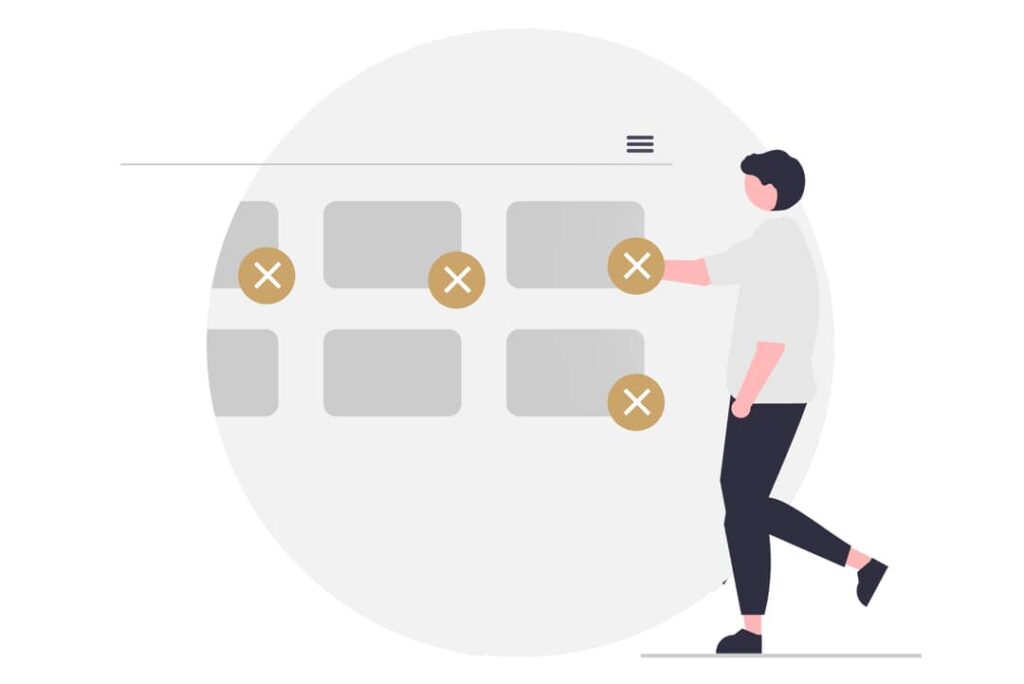
Ruby vs Python: Differences
Ruby and Python also have their differences, and this is where developers will ponder mostly when deciding which programming language to use, and which to learn first. This brings us firstly to one of the biggest differences, being the learning curve.
Learning Curve
The time it takes to learn a programming language has knock-on effects on the onboarding process of team members and the overall investment needed to master programming concepts to sufficiently contribute to and progress a codebase.
Although this process is typically shorter with higher level languages like Python and Ruby (that avoid underlying memory management and lower level APIs), Python is a lot easier to learn than Ruby.
This is mostly due to Ruby’s built-in features (some of which we’ve mentioned above) and constructs that are not found in other languages. Another reason for Ruby’s additional difficulty is the reliance on Ruby on Rails, the framework used for the vast majority of Ruby projects these days.
Not only does the developer invest more time to get comfortable with the Ruby programming language, but also to learn and understand how to use Ruby on Rails, which comes with many features and conventions itself – we’ll explore this more further down.
Python on the other hand offers a more beginner-friendly syntax, and is used as a first (or primary) programming language by many developers. It is used in many domains and therefore is not tied to a particular framework, and less is needed to be learned – at least to get started – as a result.
Inheritance
From a technical perspective, Python supports multiple inheritance whereas Ruby supports single inheritance.
This means that Python can inherit methods, class properties or attributes from any number of superclasses (parent classes). Ruby on the other hand has limited inheritance to the superclass or direct parent class.
This is quite an important consideration if you have a complex hierarchy of classes whereby deep child classes require information from the upper-most classes, in which case Python would probably offer a cleaner solution.
Generally speaking though, methods and class attributes can be redefined or rewritten from parent to child at the expense of more boilerplate. On the upside, Ruby’s approach will prevent unnecessary methods and class properties to be passed down an inheritance tree.
Core Uses
Ruby is used mostly for web development, whereas Python has a broader range of use cases beyond just web development, ranging from academia, data science and financial applications.
This is another reason why Python is commonly chosen as a primary programming language to learn over Ruby in addition to its learning curve.
Community
Although Python and Ruby both have passionate and dedicated communities, Python’s community is a lot broader. This is due to the diverse range of applications Python is used for, that have bolstered the documentation, tutorials and wealth of online resources available online.
Reusable code and package ecosystem
Package archives are extremely important for a modern programming language; they provide tried-and-tested reusable code that is readily available to download and import into any project. Python and Ruby both offer public code archives via PyPi (Python Package Index) and Ruby Gems respectively.
At the time of writing PyPi has 346,630 projects uploaded to the archive, whereas Ruby has over 133,000 – both very respectable figures.
NPMJS, the largest package archive on the internet, passed 1 million packages in 2019. This gives us some context to the strength of the JavaScript ecosystem, which is much larger than Python’s in 2021.
To further strengthen Python’s ecosystem of tools, the Conda platform also exists for the data science community. Condo is a package manager and environment manager combined – the environment manager allowing the developer to install isolated Python environments of different versions on one machine.
Both Ruby Gems and PyPi (and Conda for that matter) offer a seamless installation process for dependencies from the command line, also facilitating versioning, upgrading and removing packages.
Although both toolsets are comprehensive and offer similar functionality, Ruby’s solutions are slightly more complex, requiring more steps to set up.

Ruby vs Python for Web Development
Now let’s turn our attention to the two premier web frameworks when considering Ruby on Rails vs Python; the Ruby on Rails framework and the Django Python web framework respectively.
It is important to note here that Rails is a lot more important to the Ruby community than Django is to the Python community, but the frameworks are nonetheless competitors in the web development space.
Both Rails and Django are MVC Frameworks
The MVC (Model, View, Controller) model is a popular design paradigm for frameworks in many languages. In the context of a web framework, the codebase is essentially split into three groups, often separated by top-level folders. Those groups are:
- Model: The files that source all data for your app. For web applications, the model would fetch data from a backend database, or from other data sources.
- View: The “view” files are often templates designed to display the web page itself. Templates often have constructs to make them dynamic, including conditional statements and support to inject variables into placeholders.
- Controller: Controllers are files that contain the logic for a particular web page (the path of which is determined by the URL of the web page). Controllers determine what content is displayed on the web page, sourcing data from the model and rendering a template file.
Ruby on Rails and Django achieve the MVC model through native Python and Ruby code, so very different implementations can be expected.
We’ll briefly explore some of the underlying features of the two frameworks, where we’ll see that the underlying implementations of the frameworks are indeed very different, even though they both achieve a strong MVC design.
About Ruby on Rails
For those interested, a lengthy doctrine is provided on the Rails website explaining the philosophy behind the framework.
The “model” component is achieved in Rails with what they term Active Record. Active Records encompass the creation of your application’s database in addition to reading and writing its data. Everything about your model’s data structures and how your application fetches its data is present in the Active Record pattern.
The “view” component in Rails is achieved by .erb template files – Ruby’s templating language. Layouts and rendering in Rails describes this process in depth, with various code examples of their template constructs.
The Rails Router is responsible for handling URL patterns and directing the user to the correct controller.
The Rails form builder does a great job at abstracting form logic into simple template constructs.
For those wishing to learn more about Rails, the Getting Started guide is a good place to start.
About Django
Like Rails, learning Django is not trivial; it too contains its own design philosophy and conventions specific to Python, but the documentation attempts to break down the basics of the framework.
Django splits its documentation into the model, view and template layer, with the view layer in this case being responsible for processing a user’s request and rendering the correct template (the Controller in MVC).
In a similar fashion to Rails, Django allows the developer to define the schema of the application database, and gives the developer granular control over how data is fetched.
Defining URL patterns is well supported in typical Python fashion, relying on highly expressive conditions that can include regular expressions.
Django contains a different template language standard to Ruby, further differentiating the two offerings. Thorough documentation of the template language can be found here.
Django does not force developers to use a specific template engine, or a particular database for that matter. Developers are free to use any of the supported database plugins, for example.
Django is labelled as “somewhat opinionated”, attempting to provide the best of both worlds for developers. It provides a set of default components that handle most web development tasks, but developers are free to swap or tailor their solutions as they see fit, and Django attempts to support this through their APIs.
Forms in Django are capable, but syntax is not as minimal as Rails – a very notable difference between the two technologies.
For those wishing to learn more about Django, the Writing your first Django App guide is a good place to start.
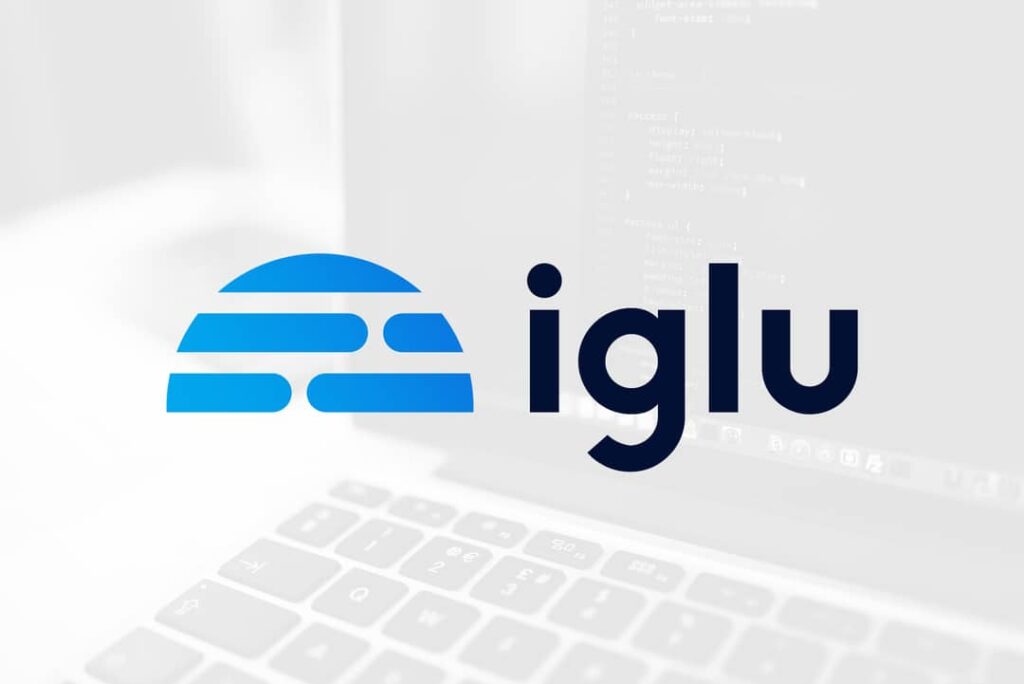
Outsource Web Development with Iglu
With over 10 years of experience in the industry, Iglu has a track record of attracting talented web development specialists from all over the world. Our Enterprise-grade employees range from senior talents with decades of experience to junior employees for more affordable solutions.
Not only are we experts with the mainstream tech stacks, but we also have specialists in some of the most exotic programming languages.
See our comprehensive list of services for more information and we will look forward to working with you.

Ruby vs Python: Summary
This article has broken down the argument of Ruby vs Python in detail, examining where they stand in 2021, and why they are still relevant decades since their inception.
The similarities and differences of Ruby vs Python were explored in detail, giving the reader a strong perspective of which programming language they would opt for given a particular project.
Finally, the dominant web frameworks of Ruby and Python were discussed along with some of their underlying features.
Ruby on Rails and Django are both complex frameworks with their own design philosophies, conventions and technologies embedded within them. Along with the programming language itself, frameworks also require time and effort to learn. Given Ruby’s reliance on Rails, developers will spend a lot more time learning Ruby than Python.
In any case, both languages provide great getting started documentation. With dedicated and passionate communities, it can be fun and rewarding to learn or contribute to Python and Ruby.
But in terms of popularity, range of applications and overall standing, Python is the clear winner of the two technologies.





